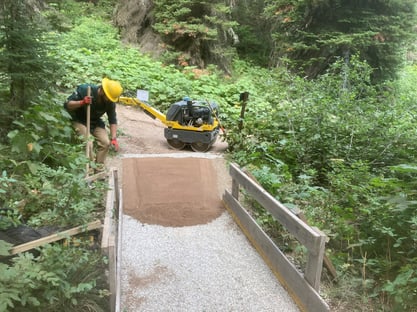Quality of Life Grantee Spotlight: Glacier National Park Conservancy
Join Our Movement
What started as an idea has become a national movement. With your support, we can influence policy and inspire lasting change.
Become an Advocate
“The magnificent scenery of Glacier National Park tends to impact people in a big way. We hope that by making trail accessibility a priority, Glacier can have a profoundly positive impact on individuals with all levels of ability,” says Lucke.
It takes roughly two weeks for a crew of over a dozen workers to make an accessible portion of the trail using Sta-Lok, a unique natural paving material. Created using decomposed granite and crushed stone with a patented polymer technology, the surface has increased traffic resistance and resists weathering from water.
“Crews can only work from June to September each year. Asphalt is not an option here with the winter freeze and thaw cycle,” says Lucke. “Trail crews tried different materials on other trails, and we picked this material because we found it worked the best.”
Trail of the Cedars on the park’s busier west side is also accessible, and the park’s first accessible backcountry camping site will be completed in 2024. The Swiftcurrent Nature Trail remains open to visitors each season as the final sections of the trail are completed.
“National parks were created on the premise of inclusivity for everyone, but funding limits the ability to make this happen,” says Lucke. “We are always looking for partners to help us make more of the park accessible. We are so grateful for the Reeve Foundation’s support and the opportunity to ensure Glacier remains accessible for future generations.”
